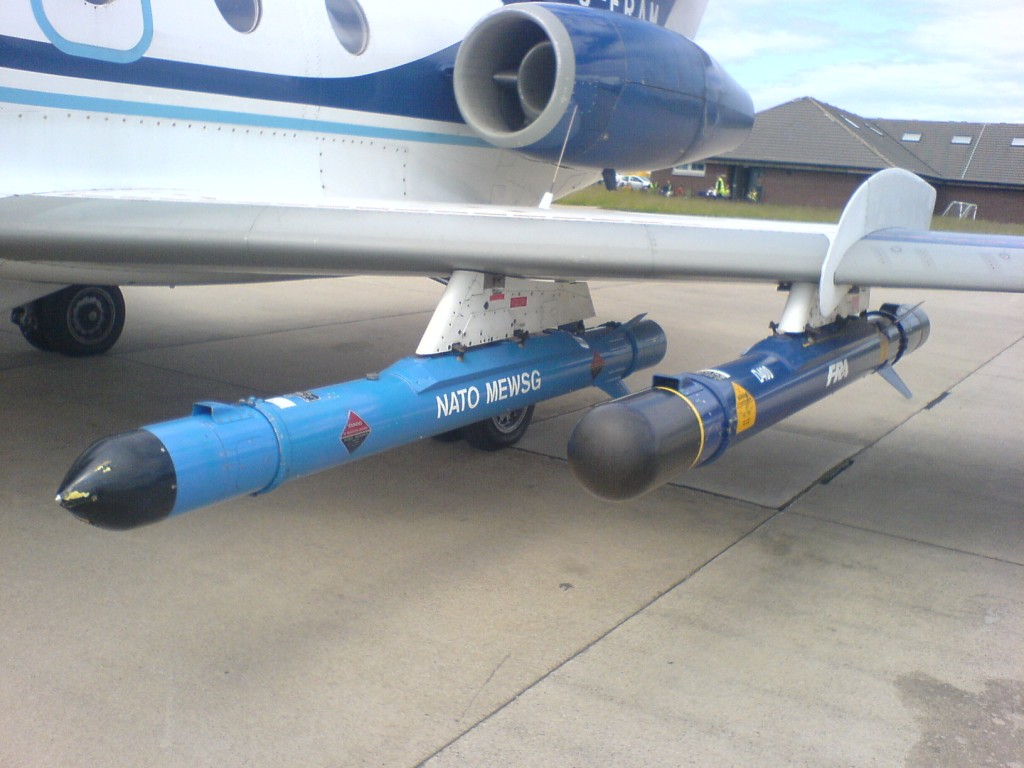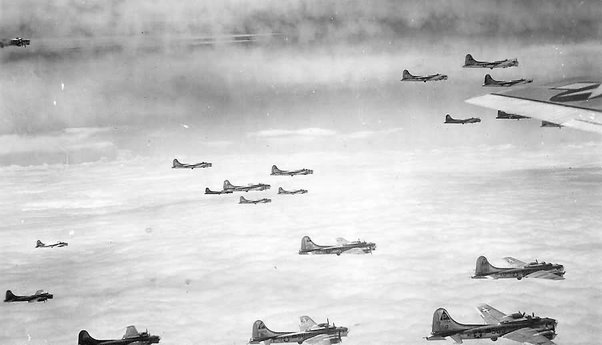A former EW pilot shares the 10 best forms of jamming
I hope you like jamming too

In my flying career I was fortunate enough to fly Dassault Falcon 20’s for UK-based company F R Aviation (part of Cobham PLC). The operation existed to provide Electronic Warfare training to the RAF, Royal Navy and other forces around NATO. Utilising a fleet of heavily modified Falcons we flew daily missions over the southwest approaches in support of the Navy, over the North Sea against RAF Tornado F3s and latterly Typhoons, we also took part in many major NATO exercises from Cope Thunder in Alaska to NATO Air Meet in Turkey and even in operations as far afield as Malaysia. The operation is now run by Draken International who still utilise the same aircraft but twith the addition of a more agile platform in the AERO L-159 single-seat Light Combat Aircraft.

Electronic warfare, particularly radar “jamming” has been around since the Second World War, driven by the need to counter the emerging threat of radar-guided weapons and detection systems. Training in how to use and counter EW is still an essential part of military training worldwide.

The first EW system, codenamed “Moonshine” was introduced in July of 1942 and fitted to RAF Defiant fighters to deceive the German ground-based early warning “Freya” radar system.

The first mission was a great success, three Defiants fitted with Moonshine, each tuned to a different frequency successfully “spoofed” the German radar system into believing that a large wave of enemy aircraft was approaching. This caused the entire German fighter force in the Cherbourg area to scramble into the air, potentially leaving large sections of the coast unguarded.
This type of spoofing continued into 1943 with one of the Dambusters Lancaster bombers carrying a Moonshine jammer on the famous raid in May. In response, the Freya system was modified to operate on higher frequencies to the extent that Moonshine was no longer practicable in that role. It had however proved that not only was radar jamming possible, it was also essential.
In the years following the war the development of EW systems was rapid and continuous, with both sides in the Korean and Vietnam wars using EW to great effect. The United States Navy launched its first dedicated electronic warfare aircraft, the EA-6B Prowler in 1971 with the US Air Force utilising the Douglas A-7D Corsair in a similar role until the introduction of the EF-111 in the early 80’s. Both types are now out of service and the EF-18G Growler, a derivative of the very successful Super Hornet, now fulfills the role for the USN and Marine Corps.
Around NATO many EW systems are in use, the RAF Typhoon is equipped with the Praetorian Electronic Warfare System, while the F-35 Lightning II features the AN/ASQ-239 Barracuda EW suite. Both of these are highly sophisticated systems that incorporate Radar Warning Receivers, Electronic Attack capabilities (jamming), Threat Identification and Classification and Integrated Self-protection.
But how do these Electronic Attack capabilities and Self-protection systems actually work? Let’s take them in a rough order of effectiveness working from the least effective to the most effective:
10. Stealth

“Where did HE come from?” While not actually an electronic system a stealthy design is the first step in protecting an aircraft from enemy radar systems. Stealth aircraft are designed to minimise their radar cross-section (RCS), making them less detectable by enemy radar systems. By reducing radar reflections the aircraft can avoid or delay detection until they are closer to their targets, giving them a tactical advantage.
9. Mechanical techniques

“Where’d he go?” Chaff: a “cloud” of metallic strips explosively ejected from an aircraft to create a false radar return. Having “dropped” the chaff, a suitably hard manoeuvre by the defending aircraft should be enough to “confuse” the radar in question, allowing it to “break” the radar lock for long enough to escape.
8. Decoys

“Well, it looked like him!”. Having mentioned the Growler (stop laughing at the back) earlier it’s useful to point out that it carries a Fibre Optic Towed Decoy, which is designed to protect the aircraft from radar-guided missiles. Consisting of a small, lightweight decoy module connected to the aircraft by a long, thin fiber-optic cable its design mimics the radar cross-section and electronic signature of the aircraft, deceiving radar-guided threats into tracking and engaging the decoy instead of the actual aircraft.
Barrage jamming “I can’t see anything!” Very simple really, the jammer covers the entire bandwidth of frequencies that the target radar is capable of operating on generating lots of electronic noise. It’s like standing in a pub yelling at your mates so loudly that they can’t hear each other, the problem is, neither can anyone else!
6. Sweep jamming

“Peek-a-boo!” Similar to barrage, only this time one frequency is “hit” for a short period before “sweeping” onto the next, think of it as covering the eyes of one person at a time, you can put all of you energy into it but the others can still see you.
5. Spot jamming

The clue’s in the name. Continuously poking one enemy in the eyes. Again a lot of power is available but if the target radar changes frequency your effect disappears.
4. Deception jamming

“He can’t do that!” This is the clever bit, known as Range Gate Pull Off (RGPO) and Velocity Gate Pull Off (VGPO), both of these techniques confuse a radar into believing that a target has done the impossible. Electronically making it look like the range to the target or the velocity of the target has changed so quickly as to not be physically possible. Like an illusionist moving from one transparent box on the stage to another, you can’t believe your eyes. A radar doesn’t believe it either so it breaks the lock.
3. DRFM

(pronounced “DrrFmm”, no, really): “There’s f’ousands of ‘em!”
Digital Radio Frequency Memory is a highly advanced technique. The jammer receives a radar’s pulse, stores it, analyses it, modifies it and fires it back in time for it to be accepted as genuine by the radar awaiting the response. The analysis of the pulses is so accurate that the system is very quickly able to “predict” what the next pulse in a stream might “look like”. In this way false targets can be generated, they can be made to appear to be moving around in the vicinity of real targets to look like a much bigger force. It’s almost like a very clever version of the original 1940’s Moonshine system.
2. GPS Jamming

“Where are we?” In the news for all of the wrong reasons right now, GPS jamming is extremely simple and extremely effective. With large swathes of the Eastern Mediterranean being “blanked out” by jamming related to the ongoing Gaza campaign, the western Black Sea is seeing similar effects due to the situation in Ukraine. This insidious form of jamming and spoofing has caused numerous civilian aircraft to stray from their intended routes and, in at least one case, to the boundary of Iranian airspace.
1. Communications Jamming

“What did he say?!” In my experience jamming the radio comms of aircraft engaged in air warfare is one of the most effective techniques. From “broadband” frequency jamming, individual frequency jamming to recording and playing back individual radio calls it can make a fighter pilot’s life hell. It was always the main reason no-one ever bought us a beer on exercise.
The above is a simplistic overview of the electronic techniques that can be used in the increasingly electronic battlespace. However, with the advent of widespread GPS jamming affecting civilian aircraft, it’s no longer only the domain of the military pilot.
- Steve Cummings
The Hush-Kit blog needs more support to continue, if you have enjoyed any of our over 1000 free articles do consider dropping us a donation via the buttons on the top and bottom of this screen


An interesting, concise and a very readable introduction into the subject. Thank you.
My father was a USAF Electronic Warfare Officer first on B-29s in Korea, then the B-47, and finally in Vietnam, the EB-66. In fact he was famous for 15 minutes in the late 1950s when he was the first EWO to log 1000 hours in the EB-47 EW capsule that was located in the bomb bay. He never shared with me what exactly he did but he once gave me a small parachute he said was used to drop chaff. I really appreciate this short introduction of what EW is all about.
Your description of the two pulloffs is slightly off.
Neither VGPO nor RGPO is designed to make the aircraft look as though it’s done something impossible, nor suddenly. Instead, a signal of higher power than the nominal reflection is transmitted back to the enemy receiver and is gradually “pulled off” from the actual target. “Pull off” means that the enemy radar chooses to follow the higher-power reflected signal whose characteristics are then varied gradually to cause an error in the measurement of the velocity, range, or both of the target aircraft. Presumably, the true reflection is assumed to be noise.
Former B-52 ECM programmer,
Bill
Disappointed no mention of Bob Marley in this article.
Ade